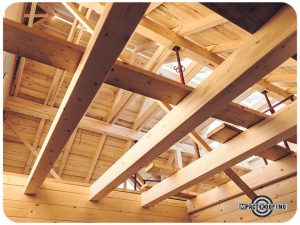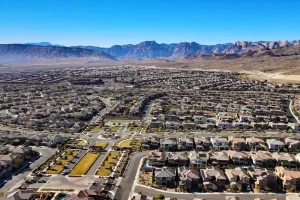Questions About the Neighborhood Every Renter Should Ask
Go Back To Previous PageWhen looking for apartments for rent in a new neighborhood, the significance of asking the right questions cannot be overstated. These questions serve as a compass, guiding you toward a neighborhood that meets your immediate needs and aligns with your long-term goals and lifestyle preferences. Knowing what to ask will make all the difference whether you’re seeking a quiet residential area or a bustling urban environment.
Additionally, understanding the tenant screening process used by landlords can provide you with valuable insights into the community you might be joining, ensuring it aligns with your comfort and safety standards.
The impact of the neighborhood on your quality of life cannot be underestimated. Each neighborhood has its atmosphere, amenities, and community feel that can significantly influence your day-to-day experiences. Ensuring that the neighborhood suits your lifestyle is crucial for your overall well-being and happiness during your rental period.
influence your day-to-day experiences. Ensuring that the neighborhood suits your lifestyle is crucial for your overall well-being and happiness during your rental period.
Accessibility and Transportation
One crucial aspect to consider is the accessibility and transportation options available in the neighborhood. First and foremost, inquire about the availability and proximity of public transportation options, such as bus stops, train stations, or subway lines. Understanding the convenience of accessing public transport can significantly impact your daily commute and lifestyle. Knowing how accessible these services are, you can better plan your daily activities and ensure a smooth transition to your new neighborhood.
Another vital consideration is evaluating commute times to your workplace or school from the potential rental property. By understanding the typical commute times during peak hours, you can assess the feasibility of living in a specific neighborhood. Factors such as traffic congestion, distance to key destinations, and alternative transportation routes can all influence your decision and overall satisfaction with your chosen location.
In addition to commute times, it’s essential to check the walkability scores and bike-friendliness of the neighborhood. Walkability refers to how easily you can navigate the area on foot, while bike-friendliness assesses the availability of bike lanes and cycling infrastructure. For those who enjoy walking or cycling as part of their daily routine, having access to pedestrian-friendly paths and bike lanes can enhance the overall quality of life and promote a healthy lifestyle.
Questions About the Neighborhood: School Districts and Education
By taking the time to research school ratings and performance metrics, prospective tenants can gain valuable insights into the educational standards and opportunities available in the neighborhood. Investigating the proficiency of nearby schools can significantly influence where families choose to reside, as it directly impacts their children’s academic journey and prospects.
In addition to school quality, exploring daycare and preschool options is vital for parents with young children. Understanding the availability of daycare and early education centers nearby can help plan childcare needs, ensuring a seamless transition for families with toddlers or preschoolers. Evaluating the proximity and quality of these facilities can alleviate concerns and provide peace of mind for parents who entrust the care and development of their children to these establishments.
Moreover, considering the range of extracurricular activities accessible to children in the neighborhood is essential. Participating in sports, arts, or academic clubs can enrich a child’s social and personal growth beyond the classroom.
Questions About the Neighborhood: Noise and Environment
Here’s an in-depth exploration of how to navigate these crucial considerations:
Noise Levels
Evaluating noise pollution from various sources, such as bustling traffic arteries, neighboring airports, and vibrant local businesses, plays a pivotal role in shaping one’s daily tranquility and comfort within a chosen neighborhood.
The incessant hum of cars, the intermittent roar of planes overhead, or the bustling activities of nearby establishments can either contribute to the vibrancy of urban living or serve as potential disturbances that might impede your peace of mind. By conscientiously assessing the prevailing noise levels, renters can align their preferences with the community’s ambient soundscape, ensuring a harmonious coexistence with their surroundings.
Green Spaces
The presence of lush parks, serene green spaces, and recreational areas within the vicinity holds profound significance for renters seeking solace, relaxation, and opportunities for outdoor rejuvenation. The availability of verdant retreats not only enhances the neighborhood’s aesthetic appeal but also fosters a sense of well-being and community cohesion.
From morning jogs in tranquil parks to leisurely picnics under the shade of towering trees, green spaces offer a sanctuary for residents to recharge, reconnect with nature, and partake in leisurely activities that contribute to a balanced lifestyle.
Environmental Concerns
Delving into environmental considerations entails a comprehensive evaluation of pollution levels, potential hazards, and sustainability practices prevalent in the neighborhood. Scrutinizing air quality, water purity, and the presence of environmental threats, such as industrial emissions or hazardous waste sites, is vital in safeguarding one’s health and ensuring a safe living environment.
Local Crime Rate and Police Presence
By inquiring about the safety and security of the area, you gain valuable insights into the environment in which you may potentially live.
Begin by asking about the specific crime rate in the neighborhood. Request information on recent crime statistics to gain a better understanding of the community’s overall safety. Inquire about the types of crimes most prevalent in the area, whether petty theft, vandalism, or more serious offenses. By knowing the specific crimes that occur, you can assess the level of risk and make an informed choice about living there.
Furthermore, it is vital to inquire about the frequency of police patrols in the neighborhood. Understanding how often law enforcement officers are present can indicate the area’s level of active monitoring. Regular police patrols can deter criminal activities and promote a sense of security among residents. By knowing the level of police presence, you can gauge the authorities’ responsiveness to potential security concerns.
Community and Culture
One of the key aspects to inquire about is the neighborhood demographics. Understanding the community’s demographics and culture can provide valuable insights into the area’s composition. Are there diverse groups of residents living in the neighborhood?
What is the average age range of the residents? By examining these details, potential renters can determine whether the neighborhood aligns with their preferences and lifestyle.
Another crucial factor to explore is the availability of local events and community gatherings. Renters should inquire about the frequency and types of events in the neighborhood. From cultural festivals to farmers’ markets and community gatherings, these events provide opportunities for social engagement and reflect the area’s vibrancy and community spirit. By attending these events or gathering insights from locals, renters can gain a sense of the neighborhood’s social scene and community involvement.
In addition to community events, renters should also look into the involvement and activities of neighborhood associations. These associations significantly shape the community by organizing events, advocating for local needs, and fostering a sense of belonging among residents.


